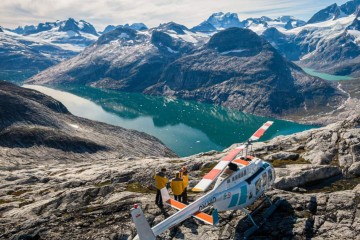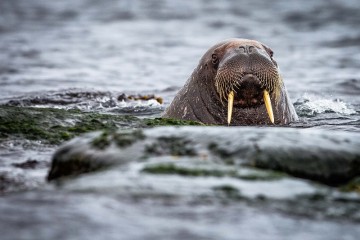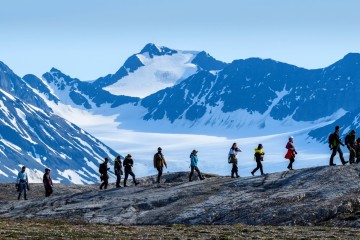Greenland: Disko Bay & Beyond | Ocean Albatros
Tour Overview
Join a majestic adventure in Greenland and experience summer in the Arctic complete with: gigantic icebergs, settlement visits, the stunning Eqi Glacier and Greenland in a changing climate.
Travelling by sea is still the best way to experience Greenland. The places most worth seeing are situated along the dramatic coast line: small and colourful houses situated on the steep mountains sides down to a fjord, giant glaciers producing enormous icebergs, whilst whales and seals play in the sea. And only a few minutes’ hike away you will find yourself totally isolated, surrounded by wilderness. The people of Greenland live along the coast in small towns and settlements – at summer only accessible from the sea. Their culture, architecture and living conditions are enriched and limited by the harsh nature of the Arctic. On our town visits, you will have opportunities to meet the hospitable Greenlanders and learn more about the Inuit culture.
Embark our state-of-the-art vessel Ocean Albatros for an adventure through West Greenland. Utilising Ocean Albatros' fleet of Zodiacs, nowhere is off limits to us. With the ability to land in small villages or lonely beaches, we can access even the most remote locations. Witness Arctic nature from the superlative comfort of Ocean Albatros, as we follow the whales and seals along the coast of this remarkable island.
Unforgettable experiences await you in Greenland!
Viva's Best Bits...
Cruise above the Arctic Circle, witness giant icebergs floating in the water in Disko Bay. These icebergs come from enormous Sermeq Kujalleq glacier, the most productive glacier outside of Antarctica!
Disko Bay is a great area to learn more about life in the challenging environment of the Arctic. Meet hospitable Greenlanders and explore Inuit culture, as you visit churches, historic sites, colourful towns and villages.
Explore by zodiac boat getting you up close to the glaciers, on foot with shore visits, or perhaps add on kayaking among icebergs or book early for a flight sightseeing excursion over Icefjord!



